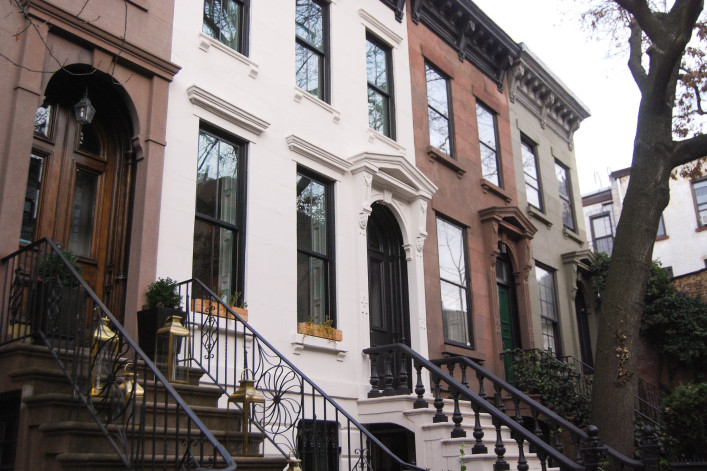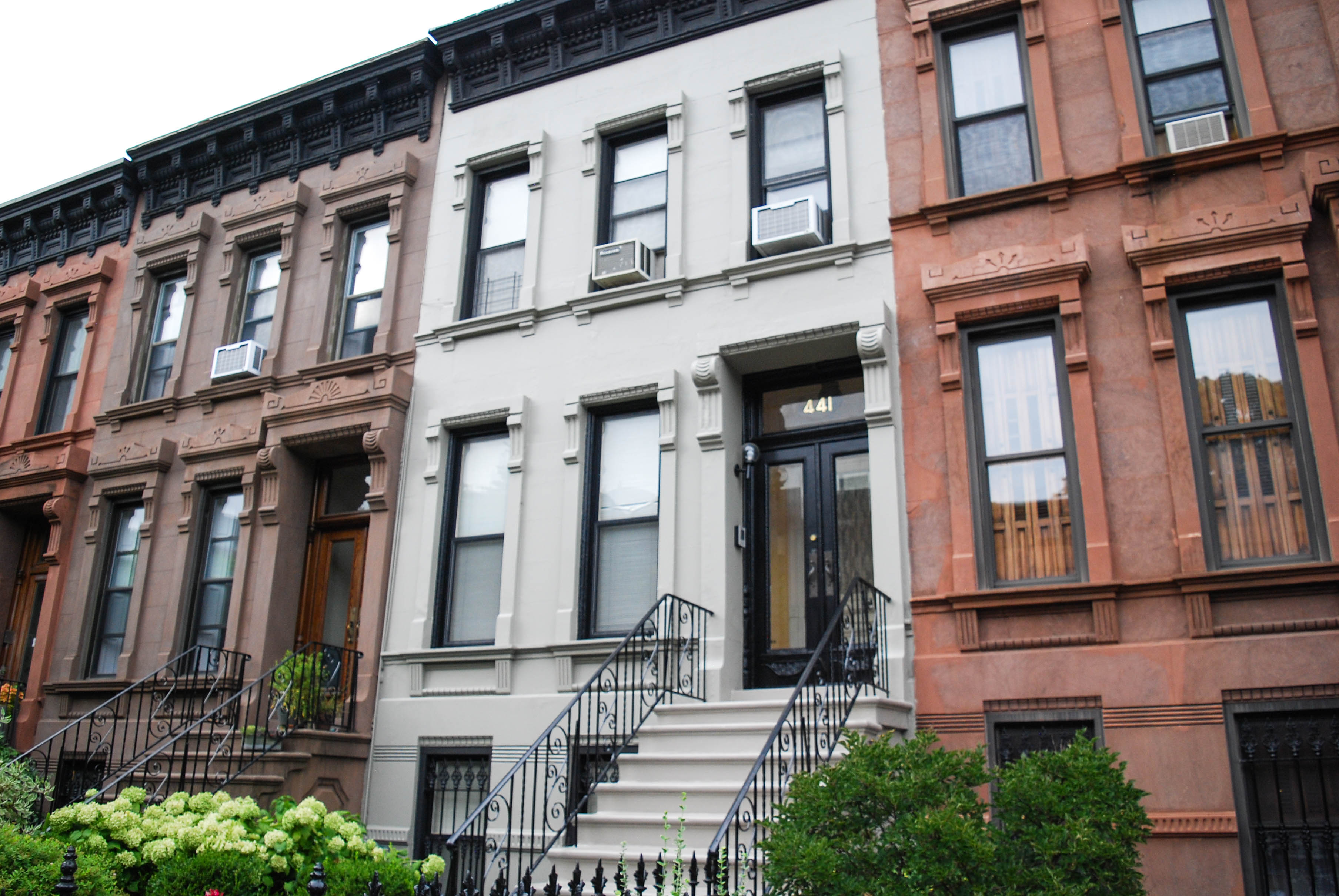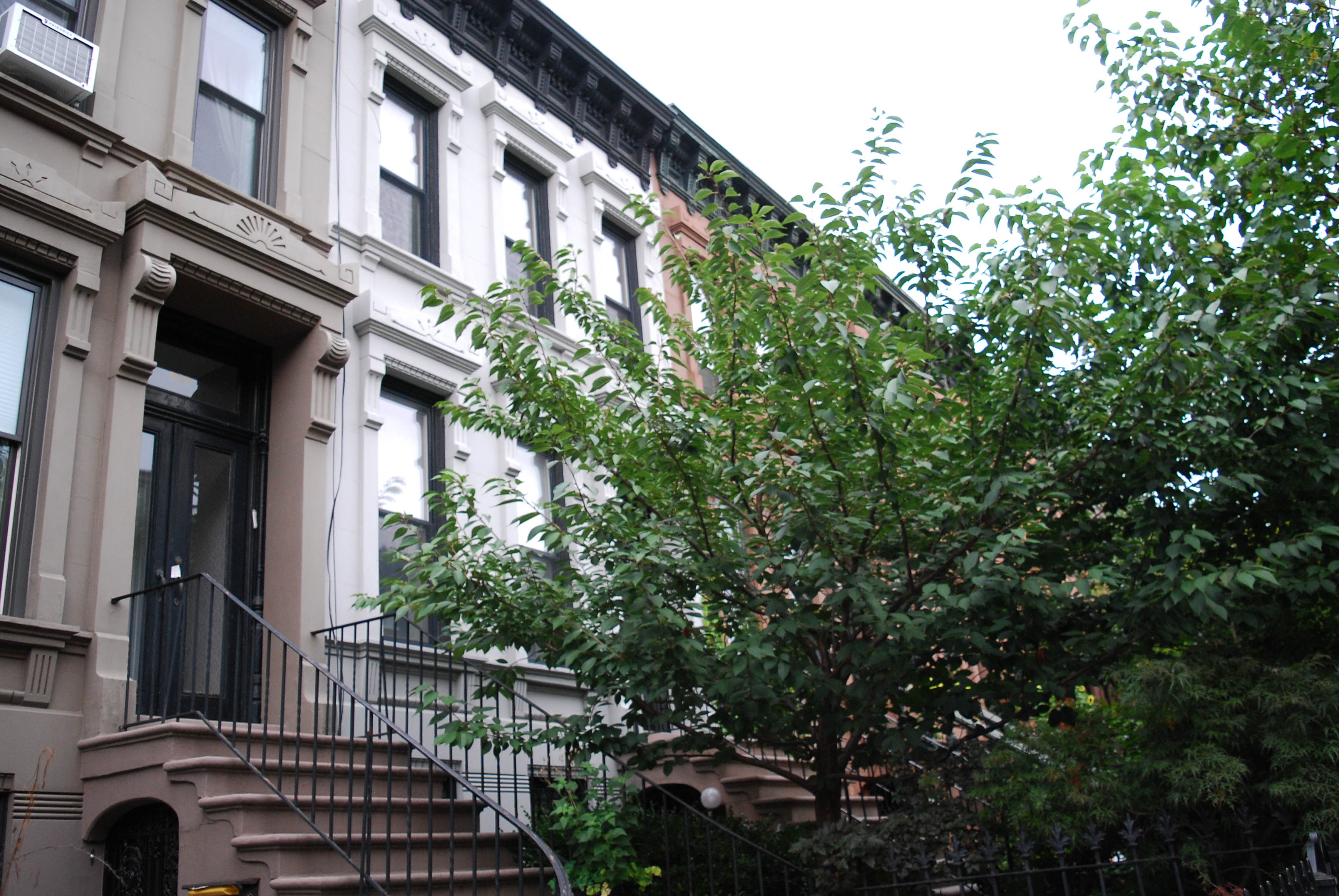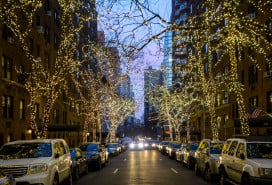Is 'whitestone' the new trend in Brownstone Brooklyn?

One of the brownstones in Park Slope with a white-painted exterior.
A townhouse makeover that saw a brownstone turned white in the heart of Park Slope may have prompted several others to go for the same stand-out look.
Lindsey Branca, co-founder of Branca & Co, a New York City restoration and renovation firm, isn't the first to turn her facade white—Jenna Lyons, the former head of J.Crew, chose a shade of white for her Brooklyn townhouse a decade ago—but Branca's house may be the recent inspiration for two brownstone facades that have gone white within a block of her.
"Our aesthetic is very monochromatic and minimalist so we wanted the exterior to synchronize with the interior and have it all be cohesive," Branca says.
Pros and cons
Interior designer Jamie Alexander owns the Brooklyn architectural firm Design Bite. She says she can understand the impulse to brighten a brownstone in this way. Brownstones are often narrow "and can feel dark for the better part of the year," she says, especially if there are mature trees at the front of the building.
Branca considered both black and green as alternatives to the facade color but says she always wanted to turn the brownstone white. She was inspired by beautiful, white English townhouses.
Her background is in commercial real estate in New Jersey and even though many, including her architect, thought white paint wouldn't hold up to dirt, she says the exterior color is pretty durable.
"We tend to hose it off to keep it clean," Branca says, but otherwise it doesn't need extra maintenance. She actually painted the facade one shade of white (Farrow & Ball's Shimmering Stone) and the steps a slightly different tone (Elephant's Breath) so they could withstand a little more wear and tear.
Though Branca didn't want to paint her brownstone gray, she says owners may conclude a color like that will hide dirt. Branca's townhouse is just outside the historic district but a brownstone one block closer to Prospect Park, in a designated historic district, has been painted off-white.

Reviews and permits
An exterior paint job in NYC is not considered construction work, so painting a building doesn't require any Department of Buildings permits or approvals. Andrew Rudansky, press officer at DOB says that's "regardless of color," which might explain the bubble gum pink paint that covered a townhouse at 233 Garfield Pl. for many years. The house was pink before the creation of the Park Slope Historic District in 1973 and only recently reverted back to brown when it was sold to new owners.
Any change to the exterior of a building that's landmarked or within a designated historic district needs approval from NYC's Landmarks Preservation Commission. Zodet Negrón is LPC's director of communications and says "lots of things can influence a decision about the exterior paint color [of a building within an historic district] including age, historic condition, and what it looked like when it was designated."

A new sensibility
Brownstone Brooklyn, Alexander says, is probably experiencing its second or third wave of gentrifiers. In decades past, there were brownstone devotees, like Clem Labine, who wrote the book on the meticulous restoration of the Brooklyn townhouse. That slavishness to Victorian authenticity is no longer a priority for buyers, Alexander says. The current generation "is looking at it with a fresher eye and not the same devotion to historic correctness," she says.
Alexander points to architect Elizabeth Roberts (recently featured in the New York Times), who is known for her bold modernization of brownstones. She's famously taken off rear facades and replaced them with glass and steel.
Alexander says she believes the desire to paint a brownstone white "is part of the same mindset...creating a completely new, modern aesthetic within the shell of something old and historic."
You Might Also Like




























